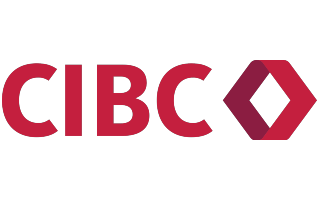Due to its demand, cotton has a large and fairly stable presence on the stock market, making it a favourite for investors. You can buy or sell an interest in cotton through a variety of investment vehicles.
1. Cotton ETFs
Instead of investing in the stock of one or two companies, exchange traded funds (ETFs) give you the option of placing your money with a bundle of assets.
ETFs are a simpler way of entering the market. While they work much like regular stocks, ETFs are protected from market movements through diversification — they don’t rely on the performance of one company.
If you are still learning the basics of investing, then ETFs are a great introduction. Cotton is a massive industry that’s been around for a long time, so it may be a good place to start. Here are a few options to consider:
- Cotton price ETF
- iPath Series B Bloomberg Cotton Subindex Total Return ETN (BAL), which tracks the price of cotton
- Overall agriculture ETFs
- Elements Agriculture Total Return (RJA), which tracks an index of agricultural commodities where cotton is a major component
- Invesco DB Agriculture Fund (DBA), which tracks an index of agricultural commodities where cotton is a minor component
Pros
- By bundling stocks from different companies together, ETFs give you access to a larger part of the industry.
- ETFs are considered by some to be the safest choice for investors.
Cons
- Because you are investing in a collection of stocks, you lose some of the control you might have had with a single company’s stock.
2. Cotton stocks
Stocks are a common option for investors, taking back the control you lose when investing in ETFs while also remaining less risky than futures. While stocks run a comfortable middle ground between the other options, they are still vulnerable to market movements and should be approached with a bit of market knowledge.
Cotton is a massive industry and will continue to be as long as we choose to wear clothes. There are plenty of brokerages offering a selection of company stocks for you to choose from, and with its prevalence, cotton may be a good place to start. Here are some of the biggest names in the industry:
- Cotton manufacturers
- Albany International (AIN)
- Unifi (UFI)
- Culp (CULP)
- Textile- and clothing-focused brands
- Ralph Lauren (RL)
- Columbia Sportswear (COLM)
- Tapestry (TPR)
- Gildan (GIL)
- Hanesbrands (HBI)
- PVH Corp. (PVH)
Pros
- A range of company stocks to choose from.
- Withdraw from the market whenever you want.
- Stable and conventional approach to investing.
- Investment control.
Cons
- While futures are certainly more dangerous, stocks still have their risks. Market fluctuations are unavoidable and can have a real impact on your investment.
3. Cotton futures
Futures are one of the riskier methods of investing, and while they can be very profitable, they can just as easily lose you a lot of money. Futures trading is more commonly the domain of cotton farmers or manufacturers, though investors and speculators can also buy and sell futures contracts through select brokerage accounts. Only a few mainstream brokerage accounts allow futures trading alongside stocks, ETFs and options.
By investing in futures, you are agreeing to buy a commodity at an agreed price to receive directly at a later date. If the price you agree to buy at ends up being lower than the price of the commodity when you receive it, you will have made a solid return; however, the market may go against you and you could end up paying more than necessary.
Futures operate on both buyer knowledge and luck. If you are new to investing, it is recommended you learn the ropes before considering futures as an option.
Pros
- Investing in futures gives you complete ownership over a commodity.
- If you make the right investment, futures can bring you solid returns.
Cons
- There is a real element of gambling present in futures, and you can end up paying dearly for a mistake.
- Futures expire if they aren’t used within a certain period of time, becoming worthless.
Compare these providers for access to cotton ETFs and more
Finder Score for stock trading platforms
To make comparing even easier we came up with the Finder Score. Trading costs, account fees and features across 10+ stock trading platforms and apps are all weighted and scaled to produce a score out of 10. The higher the score the better the platform - simple.
Reasons to invest
- Cotton is a staple commodity that is almost always in demand.
- Demand in fast-developing countries like China and India is likely to outpace their ability to produce cotton.
- Consequences of climate change could disrupt the production of cotton in various places around the world, stifling its supply and causing higher prices.
Is cotton a safe investment?
- Stockpiles: Countries hoarding cotton can influence prices if they decide to withhold their stockpiles during a shortage or put them on the market when there is no domestic demand.
- Subsidies: Policies to keep prices low and supply high can be altered over time, influencing prices both positively and negatively.
- Substitutes: Synthetic materials such as polyester can undercut the price of cotton and weaken its market share. Large but struggling economies can drastically influence prices if they switch to a cheaper material.
- Environment: Weather shifts will influence pollination, growth and yield, subsequently impacting supply.
- External influences: Other industries can have an influence on cotton prices. If oil becomes more expensive, the harvesting and production costs for cotton can rise as a result. It is a good idea to keep an eye on relevant industries.
Bottom line
Cotton is an in-demand staple you can invest in by purchasing stocks, futures and ETFs. But keep an eye out for shifts in competing industries and commodities that could impact the market.
Explore your investing options across trading platforms and commodities before you make a decision.
Frequently asked questions
More guides on Finder
-
How to buy Newsmax (NMAX.US) stock in Canada
Everything we know about the Newsmax IPO plus information on how to buy in.
-
How will tariffs affect the stock market?
Find out how the Trump tariffs will impact the stock market and explore Canadian stocks that may be resilient amidst tariffs.
-
What are the best stocks for beginners with little money to invest?
Want to dive into investing but don’t have much to spend? Take a look at these types of stocks.
-
TD Easy Trade review
Use this self-directed trading app to learn the basics of investing with a streamlined app and a number of free trades annually.
-
Best renewable energy stocks
These are the best renewable energy stocks to buy now in Canada.
-
10 best trading platforms and apps in Canada for 2025
Whether you’re a new or experienced investor, these are the best stock trading platforms and apps in Canada.
-
How to invest in the S&P 500 in Canada
Find out how to invest in the S&P 500 in Canada—one of the world’s most popular stock indices—to diversify your portfolio.
-
TD Direct Investing Review
Make quick and easy trades using this reputable online trading platform from TD.
-
RBC Direct Investing review
Here’s what you need to know about the benefits and shortcomings of this Big Bank investment platform.
-
Questrade review
Questrade is a leader among Canadian discount brokerages, but is it right for you? Compare fees, features and alternatives here.



